Volume 1 Titles:
The Killer That Stalked New York; Two of a Kind; Bad for Each Other; The Glass Wall
Volume 2 Titles:
Night Editor; One Girl's Confession; Women's Prison; Over-Exposed
Surprisingly, this time around if it walks like a Noir and talks like a Noir, is shot like a Noir and is hot like a Noir, it may not actually be a Film Noir as we discover in this mostly disappointing set of B-movies from Columbia Pictures vaults.
As oddly packaged together as Sony's nonsensically titled Martini Movies, the two volume kick-off of their Bad Girls of Film Noir collection largely fail to deliver on the studio's two basic promises that a) the films are filled with genuine bad girl characters as 75% of the time, they're not and b) that what we're watching is genuine Double Indemnity, Laura, The Postman Always Rings Twice, Out of the Past, and The Big Sleep style Film Noir since again 75% of the time, we're not.
Instead, we're mainly presented with melodramatic misunderstandings, some sudsy soaps, and wronged women in trouble as otherwise nice girls are one bad decision away from turning into individuals that Sony promises are just "too sexy to be good."
Fortunately as a fan of the old flickering images of lost black and white movies, not to mention the promise of crackling dialogue and strong female characters that typically pervade the genre, I'm happy to say that not all eight movies are a bust. Yet sadly, they're just not that good either, making you repeatedly wish you could pull elements from a few titles to re-work them together into a super Film Noir.
Unlike the studio's Icons of Screwball Comedy series that debuted on DVD over the summer, one volume doesn't necessarily stand head and shoulders above the other title as the mediocrity is spread throughout. And even though I'm tempted to advise you to skip directly to the second volume, you'd be missing out on two a few fairly entertaining films if you did so.
Immediately we're plunged into an Outbreak style medical drama dressed in Noir clothing with a scintillating narrative track that opens The Killer That Stalked New York. Shot entirely on location in New York City, the slightly tongue in cheek uncredited voice-over certainly feels Noir inspired as we meet a manipulated woman (Evelyn Keyes) whose two-timing husband has talked her into smuggling diamonds in from his native Cuba, unknowingly bringing back smallpox as well.
While Elia Kazan's far superior Panic in the Streets dealt with the same material in a much more compelling fashion, the misnomer of the title fools us from the start as we realize that Keyes is unaware that she's the infected epidemic-causing Killer Stalking the city that never sleeps.
Although it's initially gripping, director Earl McEvoy's film based on Milton Lehman's Cosmopolitan Magazine article about an actual epidemic in 1946, unfortunately turns screenwriter Harry Essex's promise of a diamond smuggling plot into nothing more than a propagandist horror film about the dangers of smallpox.
It must be a law in Film Noirdom that if you can't give somebody the nickname of Slim then Lefty is the immediately the fallback option when the beautiful but dangerous Lizabeth Scott goes on a diabolical hunt to find herself a missing heir to a fortune. Needing a man who could believably look like the estranged son of a wealthy couple, Scott's Brandy Kirby finds her man in former orphan turned small time racketeer ex-Navy man Lefty Farrell (Edmond O'Brien).
One of the few legitimate Noirs in the set, complete with all of the ingredients including Lefty, crackling dialogue like "if you see him, give him a little squeeze... around the neck," along with a love triangle and a double-cross, the remastered work which also arrives complete with an introduction from co-star Terry Moore is the perfect follow up to the previous New York dud.
A B-picture that is ranked as the B-picture as the second film on the first disc, Two of a Kind would've been the right one to open the set with, had Sony not decided that it'd be best to keep their actresses in order by leading you from a strong movie to a melodramatic one also starring Scott with Volume 1, Disc 2's introductory movie, Bad for Each Other.
Moving back into medical territory for better results than Stalked, the "nothing like Noir" effort Bad for Each Other finds top-notch Korean war vet surgeon Charlton Heston returning to the same dead-end mining town he grew up in, as the latest in a long line of men in his family who vowed to get out. Since Lefty was already taken, Heston becomes our handsome Slim who sends the society women's hearts all-a-flutter when he rescues a party girl from an attention-seeking suicidal gesture.
When Lizabeth Scott's divorcee extremely used to getting her way sets her sights on Slim's scalpel defined features, she makes him her pet project in this melodramatic morality tale of class verses medicine that, despite a solid early turn by Heston never sells us on his chemistry with Scott or the wrong-side-of-the-bedpan plot-line that today you could classify as Royal Pains meets How Green Was My Valley. While the inferior Stalked was at least in the ballpark of Noir, Bad feels like it belongs to the '40s women's weepie genre, despite its Bad Girl prerequisite.
And although she's willing to eat table scraps and try to steal a coat to stay alive, there's absolutely nothing bad about waif-like Gloria Grahame in the disc's best effort, the not-a-Noir, formerly 3-D immigration drama The Glass Wall that uses body doubles for its terrific docudrama overnight Times Square cinematography but gets away with it since the story is so good.
More a blend of the urgency of Sweet Smell of Success, near real-time dramas as it takes place in a single night, and Italian neorealism, it's easily the most emotionally riveting title in the film which makes an unlikely bookend to Stalked's back-story of a trip to Cuba with a down-on-his-luck character named Kuban.
In a phenomenal display of slow-motion circular camera work, we meet out unlikely lead whom, having lost his entire family to the Nazis, twenty-five year old Hungarian Peter Kuban (Vittorio Gassman) arrives illegally on our shores seeking a home, peace and shelter.
Illustrating the danger of returning home, while I couldn't help but ask why the whole misunderstanding couldn't have fallen under political asylum, Kuban tries to persuade officials that he's applicable for citizenship because he assisted in the Allied cause by rescuing an American soldier named Tom.
Escaping quarantine when all hope is lost and they're about to send him back home, Kuban does indeed become the man That Stalked New York, looking for the musician he rescued whose last name he doesn't know. And after helping Grahame break free when she attempts to steal a coat, she becomes one of Kuban's only friends during a long, complicated night spent evading the manhunt and hunting down the man who can vouch for his story.
With a nail-biting finale set at The Glass Wall a.k.a. the UN Building, although there's nothing Noir about the work or bad about Grahame beneath the surface, it was a terrific, forgotten B-picture that made me anxious to begin the second volume one could dub, the Cleo Moore collection instead of the misnomer title.
Featuring the stunning, blonde B-movie actress in three very different films as one of Columbia's favorite "sexpots" of the era but in a distinctly "nice girl" way, Moore is sure to attract as many fans today as she did in her heyday, if you take in her three turns in One Girl's Confession, Women's Prison, and Over-Exposed. Although none of the films are Noir per se, the first title on the disc, Volume 2's opener, Night Editor definitely qualifies.
Nonetheless, it's bogged down by the claustrophobic set-up culled from its origins as a radio show wherein the Night Editor would relate a tale since-- in the film-- the eponymous editor isn't a major player at all. However, when you take the story down to its essence and ditch the editor construct, it's a feisty little B-thriller in need of a main character first person point-of-view and a new title.
When William Gargan and Janis Carter's characters witness a brutal murder on lover's lane, Carter's Jill Merrill begs her married police officer lover not to shoot or call it in since there's sure to be an investigation which would alert their spouses to their salacious relationship.
Yet when Gargan predictably gets called in to investigate the same homicide, he struggles with the idea that not only did he let a murderer go free but he also can't share what he knows with his colleagues without jeopardizing the people he loves.
A wicked premise that builds into some well-earned suspense, the moody Noir complete with Burnett Guffrey's sharp atmospheric cinematography makes you stay tuned even when the movie loses momentum by its halfway point.
The Cleo Moore trio offer us a chance to truly appreciate the underrated actress for her talent as opposed to simply the marketing bait she was often dangled as by Columbia in the '50s. A favorite of actor turned director Hugo Haas, whom as Leonard Maltin revealed made his works independently before major studios released them to the movie-going public, we first encounter Moore in a feature by the director that find her exploring what Sony deemed "his favorite themes of luck and fate."
With a life of Bronte proportions as a woman who spent her childhood in an orphanage and a convent until her deceased dad's crooked business partner felt she could "slave away" slinging dishes as a waitress at a seaside dive, it isn't long into the movie that Mary Adams (Moore) decides to exact revenge on her selfish boss by stealing twenty-five grand from him in the dead of night.
Confessing to the crime and happily going to jail for years, Mary is willing to sing like a canary about everything she did to make up for how much the man cheated her father out of back when he was alive with the major exception of telling anyone where the money is hidden.
While her fellow prisoners buckle under the pressure of incarceration, Mary flourishes, working in the garden and ensuring she's a model prisoner since she knows precisely how much money is waiting for her on the outside, if she can find a way to get it by shaking the cops.
Engrossing and fast-paced, One Girl's Confession is the two volume set's strongest offering since The Glass Wall and because of the ingenious order of the films by Sony, endears Moore to us enough that we're not at all shocked to see her back in the penitentiary in the social consciousness cheese-fest Women's Prison.
Although Moore is terrific as a worldlier prisoner looking out for the weak new fish, she's no match for devious warden Ida Lupino who ensures that everything about their stay will fall under the heading of cruel and unusual until the inmates decide to teach her a lesson.
Completely unbelievable as prison is filmed as though it's a sorority or summer sleepaway camp with cheerful inmates and jokes, it's a giant misstep in the pacing of the quadruple feature that luckily is rectified by Prison director Lewis Seller's Over-Exposed.
Giving Moore her strongest chance to shine occurs in the final feature of the collection, from the start of this title, which like the previous three passes the land of Film Noir without stopping or collecting $200, we see a pattern of nearly finding the likable actress sent back in the clink. However, as a newcomer who allegedly and naively wound up at a clip joint, she's warned by the police that she needs to leave their fair community.
With only an evening dress to her name as all of her belongings are in a locker at the bus station, she makes the remarkably trusting decision to go home with an elderly photographer. However, his ability to ignore the usual male attraction while taking pictures of her modeling swimwear intrigues Moore enough to take up the trade herself after realizing she can make quite a good living at a rare career that allows women to succeed.
And with the old man as a mentor teaching her everything he knows about the art of photography and Moore showing him a thing or two about business, soon she's on her way as a top New York photographer, leaving her "good girl" image behind when she wanders into the gray area of blackmail to quicken her climb up the professional ladder.
While it's still hard to call her character a downright bad girl since Moore is simply a morally flexible opportunist who makes some bad judgment calls, the B-movie nonetheless gives her the chance that unfortunately not a lot of women labeled "buxom bombshells" had in the era of playing a character whose role didn't involve her making a fool out of herself for a man but instead trying to reach her dreams.
An imperfect picture but still one of the better titles in the lackluster collection, Over-Exposed makes us curious why Sony didn't offer a Cleo Moore set in the first place in order to bypass all of the misnomers to be found in the series description of Bad Girls of Film Noir. The set also including the original theatrical trailers for a majority of the films and two bonus shorts.
Of course, any time a studio reaches way back into their vault to remaster and distribute films that haven't seen the light of day since their theatrical release, film buffs should certainly rally around the effort. Yet at the same time, I'm not sure that these eight were the right ones to pair together under the right heading without a firmer grasp on just what Film Noir actually is, let alone making us question why on Earth anything would be called a Martini Movie.
Text ©2010, Film Intuition, LLC; All Rights Reserved. http://www.filmintuition.com
Unauthorized Reproduction or Publication Elsewhere is Strictly Prohibited and in violation of the Digital Millennium Copyright Act.
FTC Disclosure: Per standard professional practice, I received a review copy of this title in order to evaluate it for my readers, which had no impact whatsoever on whether or not it received a favorable or unfavorable critique.
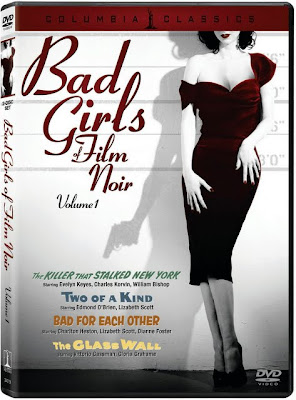


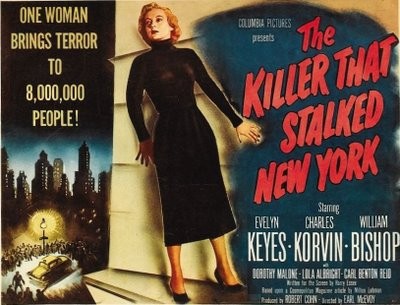
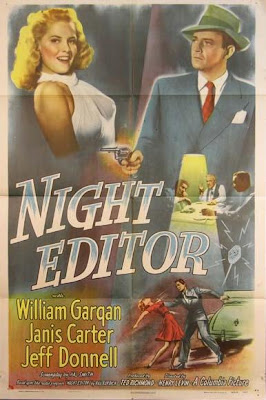
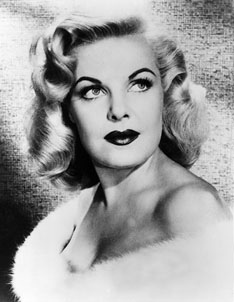
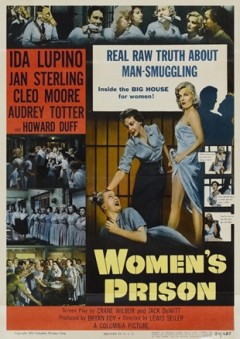



.jpg)








